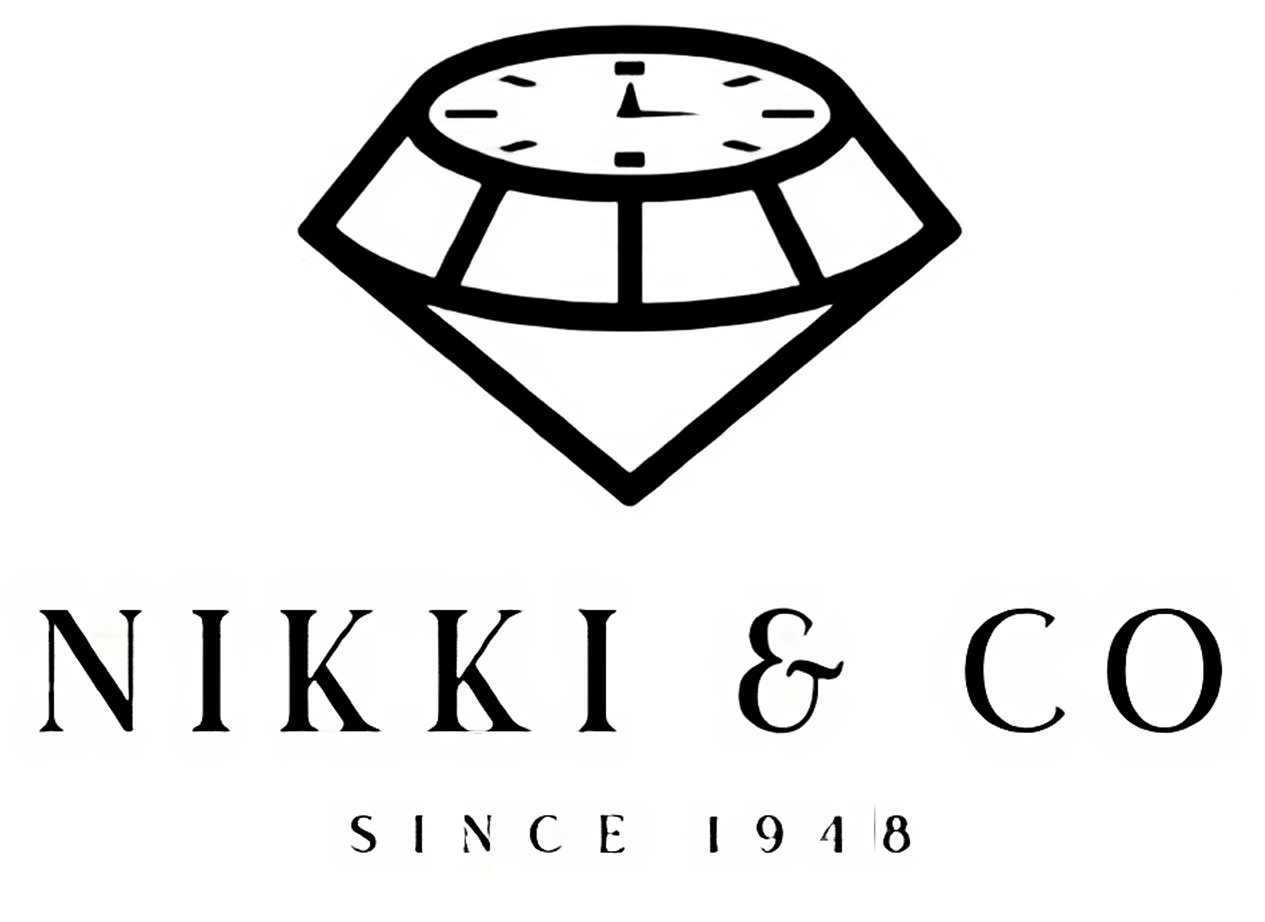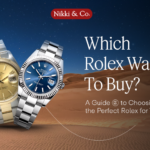History Of Rolex Watches

An Eternal Heritage: The Background of Rolex
Founded in 1905, Rolex has etched its place into the annals of horological history. From its modest beginnings in London to its current global supremacy, Rolex has continuously pushed the limits of the art of watchmaking. Due to its reputation for luxury, creativity, and precision, the brand is now well-known and highly respected all over the world. The history of Rolex, replete with trailblazing inventions and iconic moments, captures the spirit of a company that has completely reinvented timekeeping.
The Legend’s Inception:
The history of Rolex started in 1905 when Hans Wilsdorf and his brother-in-law, Alfred Davis, opened Wilsdorf & Davis, a London-based business. In the beginning, they imported Swiss movements, put them in premium watch casings, and sold them to jewelers. The brand’s early goals were to produce high-quality watches that would become industry benchmarks for watchmaking.
Wilsdorf strategically moved the firm headquarters to Geneva, Switzerland, a city well-known for its watchmaking prowess, in 1919. With this change, the business took on the name Rolex, which Wilsdorf chose due to its elegance, simplicity, and multilingualism. Rolex solidified its status as a pioneer in the field of innovative watchmaking by settling in Switzerland.
Creating the wristwatch first:
In the early 20th century, wristwatches were largely worn by women, with males preferred pocket watches. Hans Wilsdorf recognized the wristwatch’s promise as a useful and fashionable men’s timepiece.
When Rolex received the first-ever Swiss Certificate of Chronometric Precision for a timepiece from the Official Watch Rating Center in Bienne in 1910, history was made. This achievement was revolutionary. It strengthened Rolex’s dedication to precision and dependability and increased the appeal of its timepieces to a wider, more sophisticated market. Wilsdorf’s commitment to accuracy would form the basis of the Rolex philosophy, differentiating the company from its rivals.
The Revolution of the Oyster Case:
With the release of the Oyster casing in 1926—the first watch case to be completely waterproof and dustproof in history—Rolex underwent a sea change. This innovative design was an engineering marvel that provided unmatched defense against environmental dangers including dust, moisture, and other elements that could affect a watch’s ability to function.
A hermetically sealed cage around the movement was created by the screw-down crown, bezel, and case back of the Oyster casing. This invention not only shielded the internal workings of the watch but also ushered in a new era of robustness and longevity for wristwatches. The name “Oyster” was inspired by the impenetrable shell of an oyster, symbolizing the watch’s tough nature and resistance to external influences.
Key Milestones:
1905: Hans Wilsdorf and Alfred Davis founded
1910: The first Swiss Certificate of Chronometric Precision for a timepiece is obtained; the Oyster casing is introduced in 1926.
1931: Invents the Perpetual movement
1953: Submariner and Explorer are launched
1963: saw the debut of the Daytona
A Leap into the Deep:
The English Channel Swim Rolex launched a daring PR campaign to demonstrate the Oyster case’s efficacy. Mercedes Gleitze, a British swimmer who was aiming to be the first female swimmer across the English Channel, was recruited by the brand in 1927 to wear an Oyster watch while swimming.
Gleitze’s attempt lasted over 10 hours in freezing waters, and although she did not complete the swim, the Rolex Oyster she wore remained undamaged and completely working after the experience. The world was riveted by this audacious display, which solidified Rolex’s reputation as a brand associated with innovation, adventure, and dependability.
The Infinite Movement: A Novel Phase
Another ground-breaking innovation from Rolex was the Perpetual rotor, which debuted in 1931. This was the first wristwatch self-winding mechanism ever created, using the wearer’s wrist movement to wind the mainspring. By doing away with the requirement for manual winding, Rolex produced a more effective, user-friendly watch that became the benchmark for all subsequent automatic timepieces.
The Perpetual rotor established the core of the contemporary automatic watch and further solidified Rolex’s status as a leader in invention. With this development, Rolex kept pushing the limits of what was possible for a wristwatch, combining modern technology with practicality to produce a timepiece that would genuinely last a lifetime.
Reaching the Peaks: The Adventurer
Rolex’s affinity with adventure and exploration reached new heights in 1953 with the release of the Explorer. This model was made to commemorate the first successful ascent of Mount Everest by Sir Edmund Hillary and Tenzing Norgay. The Explorer’s sturdy structure could survive the rigors of high-altitude mountaineering, and it was specifically built to withstand harsh climates.
The Explorer immediately established a solid reputation for dependability, toughness, and visibility in challenging conditions. Around the world, explorers, mountaineers, and adventurers chose it as their go-to watch, solidifying Rolex’s reputation as a brand for people who test the boundaries of human endurance.
Diving into the Depths: The Submariner
One of Rolex’s most recognizable models, the Submariner, was also released in the same year as the Explorer. Designed for experienced divers, the Submariner was the first watch to offer water resistance up to 100 meters. Because of this incredible accomplishment, professional and recreational divers alike now consider the Submariner to be a must-have.
The unique design of the watch, with its revolving bezel and extremely readable dial, immediately won over collectors’ and enthusiasts’ favorites in addition to divers. Due to its durability and accuracy, the Submariner has become one of the most sought-after models in Rolex’s collection and is still regarded as the pinnacle of timekeeping.
Reaching for the Stars: Rolex in Space:
Rolex has left a lasting legacy that transcends Earth and space. The company debuted the Daytona, a chronograph watch made for elite racers, in 1963. However, Rolex’s timepieces would soon find themselves in a whole other kind of contest—the space race.
When a Rolex watch was worn on a space mission by the United States in 1964, it proved the brand’s accuracy and resilience in the harshest circumstances. This accomplishment strengthened Rolex’s resolve to continually pushing the envelope of what is conceivable on land, in the water, and in space.
Today’s Rolex: An Iconic Piece
As a global icon of luxury, accuracy, and classic elegance, Rolex is recognized today. From its beginnings as a forerunner in the wristwatch industry to its current standing as the most recognizable luxury watch brand globally, Rolex has consistently upheld its dedication to quality, creativity, and workmanship.
Athletes, explorers, celebrities, and world leaders use Rolex watches because of the brand’s unmatched quality and reputation. The company’s participation in major athletic competitions, like sailing and tennis, strengthens its reputation as a success and achievement symbol.
Discover timeless luxury at Nikki Fine Jewelers, where we specialize in selling and trading authentic Luxury Original Rolex watches in San Diego. Elevate your style with our exquisite collection of pre-owned and new models, each meticulously inspected for quality. Trust us to provide unparalleled service and expertise in the world of fine watches.

